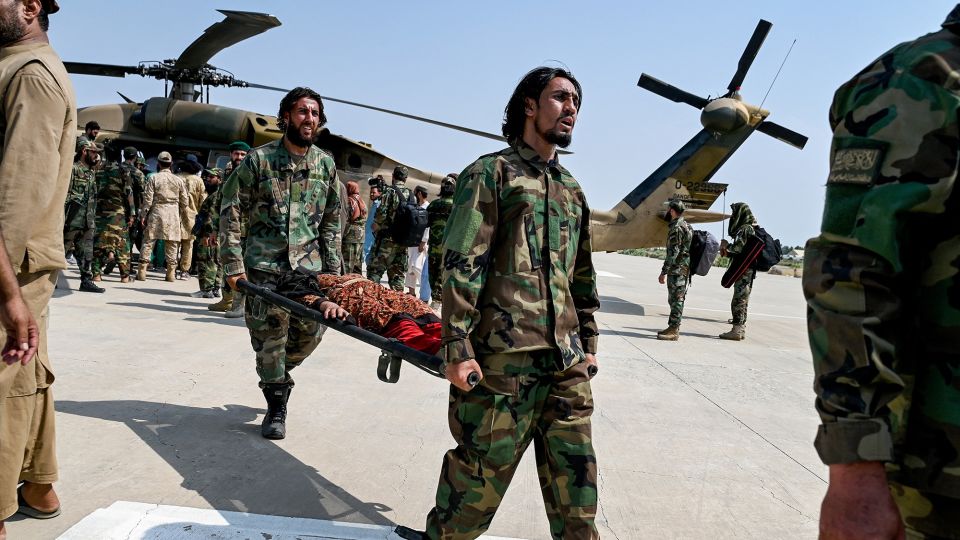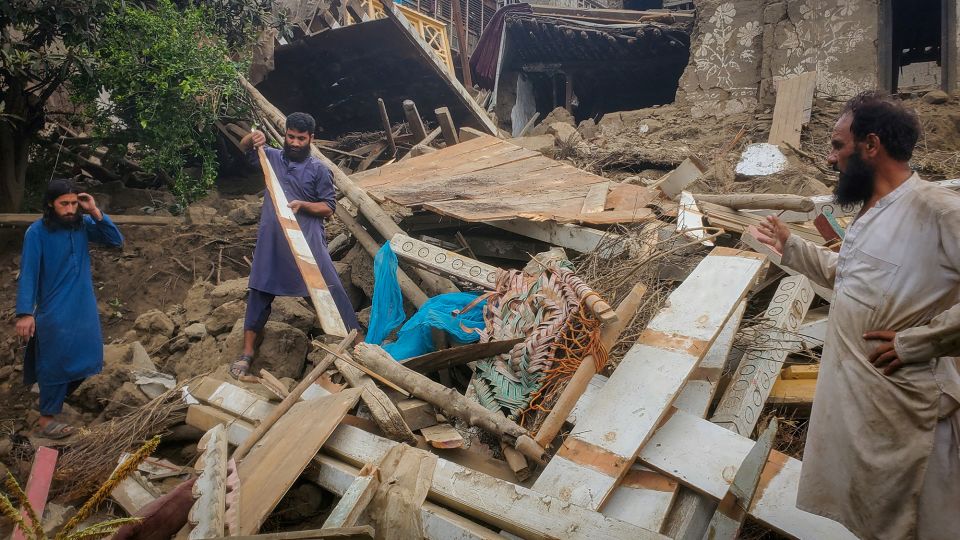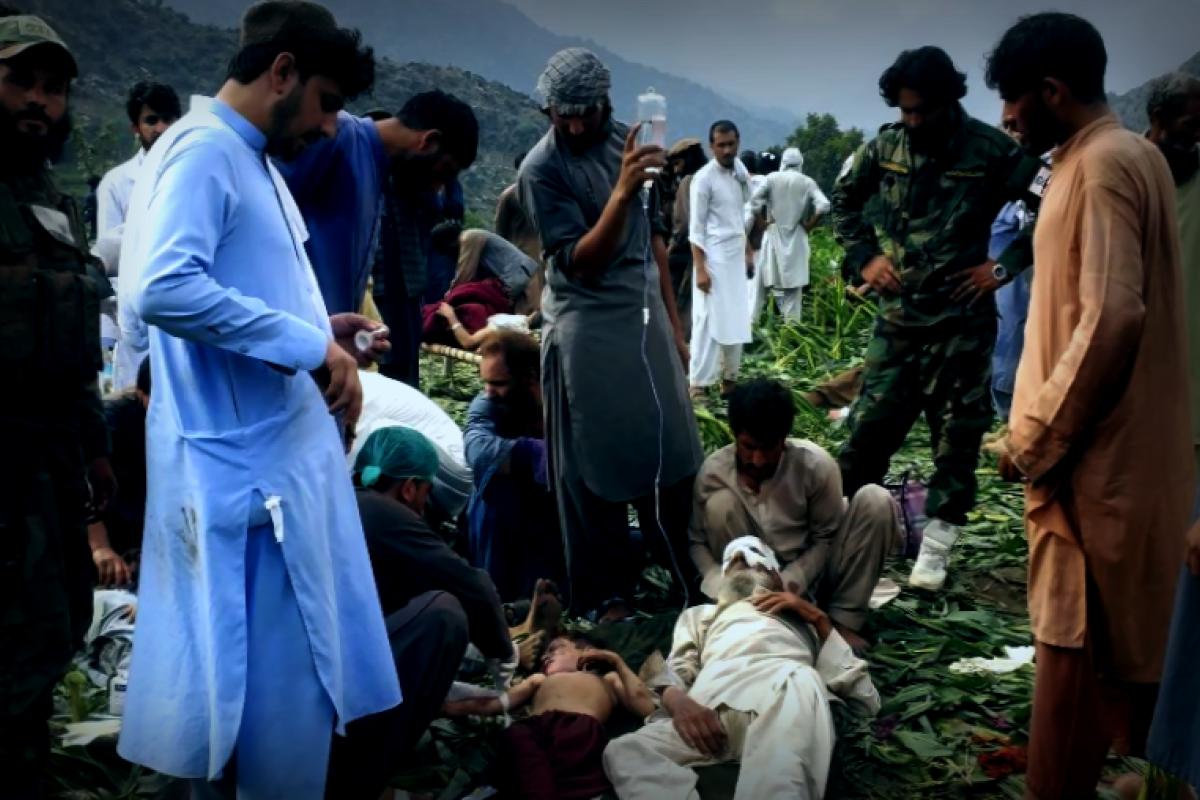A massive earthquake struck eastern Afghanistan on Sunday, causing terrible destruction and taking the lives of hundreds. The disaster initiated a large-scale rescue mission over a mountainous area, where communities already faced dire economic challenges and food shortages.
Reports indicate that at least 800 lives were lost, with over 2,800 individuals injured, after a 6.0-magnitude quake jolted towns and villages near the Pakistan border. This information was confirmed by Zabihullah Mujahid, spokesperson for the Taliban government.
In Kunar province alone, three villages were completely devastated, as per local officials cited by Reuters.
The earthquake struck just before midnight, about 27 kilometers (16.77 miles) northeast of Jalalabad, a bustling city of roughly 200,000 people located in Nangarhar province, hitting at a shallow depth of 8 km (4.97 miles), according to the US Geological Survey.
Military rescue teams were actively transporting casualties; 420 wounded and deceased were flown across various eastern provinces in Afghanistan, as reported by Reuters.
Survivor Stories Emerge
Images from the disaster’s aftermath reveal chains of brick houses buried under mud and debris. Meanwhile, residents desperately climbed over heaps of fallen concrete as relief teams faced significant obstacles accessing areas blocked by landslides and impassable roads, according to state media updates.
People on the scene shared heartbreaking accounts of their experiences, with many searching for loved ones trapped beneath collapsed homes. Witnesses recounted waiting agonizing hours for emergency responders to arrive at the hardest-hit areas, highlighting the struggle for survival.
“I was half-buried and could not escape,” said Sadiqullah from Nurgal in Kunar province, as he mourned the loss of his wife and two sons.
Footage from Reuters revealed casualties transported from helicopters on stretchers at a Jalalabad military base, while other images depicted victims receiving medical care in the city’s hospital.
Close to half a million people in the region likely experienced intense shaking from the quake, which is notable for inflicting significant damage on poorly constructed buildings, according to the USGS.

Ahmad Zameer, a 41-year-old resident in Kabul, expressed his fears about the quake’s power, noting that it was felt even over 100 miles away. Panicked residents rushed outdoors from nearby apartment buildings, fearing they might become trapped inside.
Mujahid commented on the tragedy via X Social Media, saying, “The horrible earthquake has caused both human losses and severe damage to infrastructure in eastern provinces. Local authorities and residents are working tirelessly for rescue efforts, and teams from Kabul and neighboring provinces are on route to provide assistance. All available resources are being mobilized for rescue and relief operations.”
The earthquake reverberated in several Pakistani cities in Khyber Pakhtunkhwa and Punjab provinces as well, according to a statement from the Pakistan Meteorological Department.
Rescue efforts faced additional pressure as the region experienced at least five aftershocks, the strongest reaching a magnitude of 5.2 hours following the initial quake.
The UN in Afghanistan expressed deep sorrow regarding the earthquake’s devastation, stating that its teams were providing emergency support on-site.
Ongoing Humanitarian Crisis
This war-torn nation grapples with a humanitarian crisis that has worsened since the Taliban regained power in 2021 following the chaotic withdrawal of U.S. forces, which resulted in many international aid organizations suspending their operations.
This year, the White House withdrew over $1.7 billion in essential aid contracts aimed at various programs in Afghanistan, further worsening food and medical shortages for the Afghan populace. Quickly after, the UK, France, and Germany followed suit.
This reduction in aid has severely impacted Afghanistan’s ability to respond to natural disasters, despite its frequent seismic activity.
In light of this earthquake, a senior rights official drew attention to the looming humanitarian needs, potentially overshadowing the tragedies from the previously devastating earthquake of 6.3 magnitude in 2023, which killed over 2,000 people.

“We fear greatly for the added pressure this disaster will impose on the already stretched humanitarian response in Afghanistan,” said Sherine Ibrahim, country director for the International Rescue Committee (IRC). “Global funding cuts have critically limited our ability to address the ongoing crisis in Afghanistan. Now is the time for the international community to recognize the immense needs faced by Afghans and provide crucial support for those in urgent need.”
Moreover, Afghan officials and rights advocates cautioned that reaching remote and rural areas devastated by floods would present additional hurdles in the recovery process.
This is a developing situation and more updates will follow.
Reporting contributed by CNN’s Mick Krever and Nic Robertson.
For the latest news, dive deeper at CNN.com




















